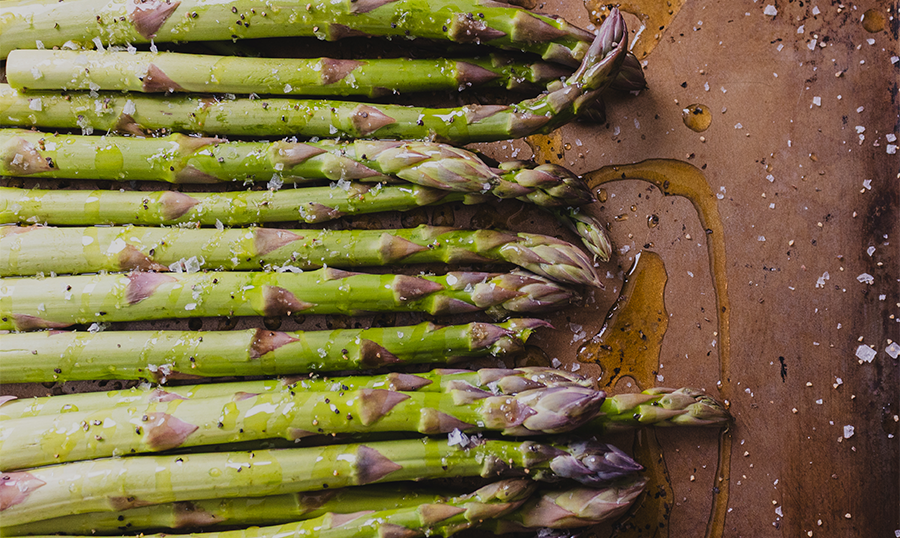The Spring Superfood You Should Be Roasting: Asparagus

Crisp, simple, and rich in fiber, asparagus is one of spring’s best functional foods.
When roasted, its subtle sweetness emerges, making it the perfect side dish for any longevity-forward plate. But this isn’t just about taste. Asparagus delivers real returns on energy, gut health, and nutrient density—right when your body needs a seasonal reset.
Why You Should Eat Asparagus (Especially in Spring)
Asparagus is loaded with nutrients that support aging on multiple levels:
- Prebiotic Fiber – Feeds beneficial gut bacteria, which support digestion, immune health, and mood regulation.
- Folate – Critical for cellular repair, methylation, and cardiovascular function.
- Glutathione – A powerful antioxidant that assists in liver detoxification and reduces oxidative stress.
- Low Glycemic Load – Won’t spike blood sugar, making it a safe bet for metabolic health.
Spring is also the ideal time to eat asparagus. In traditional wellness philosophies and modern detox science alike, spring is considered the season of liver renewal. Asparagus’s sulfur-rich compounds and natural diuretic effects support this phase beautifully.
Roasted Asparagus Recipe
Yield: 4 servings
Serving Size: 4 ounces
Nutrition (per serving):
Calories: 26 kcal | Carbohydrates: 5 g | Protein: 2.5 g | Sodium: 2 mg | Fiber: 2.5 g | Sugar: 2 g
Equipment:
- Sheet pan
Ingredients:
- 1 bunch fresh asparagus, about 18 ounces
- Olive oil spray
- Kosher salt, to taste (about 1/2 teaspoon)
- Fresh black pepper, to taste
Instructions:
- Preheat the Oven: Set your oven to 400°F (205°C). This temperature helps the asparagus become tender while creating caramelized edges.
- Prepare: Rinse the asparagus in cold water and pat dry with a towel. Trim 1–2 inches off the bottom, or bend the stalks to snap off the woody ends naturally.
- Season: Lay the asparagus on a baking sheet. Lightly coat with olive oil spray, then season with kosher salt and freshly ground black pepper.
- Arrange for Roasting: Spread the spears out in a single layer, with space between each one so they roast instead of steam.
- Roast: Bake for 10–15 minutes, until the spears are crisp-tender and lightly golden. Thinner stalks may need less time, so check early.
Optional Finish
Before serving, squeeze a little lemon juice over the top for brightness or add a sprinkle of grated Parmesan for a savory upgrade.
This is seasonal longevity at its simplest: whole food, minimal fuss, maximum benefit. Enjoy it often—and let your cells thank you later.
The information provided in this article is for educational and informational purposes only and is not intended as health or medical advice. Do not use this information to diagnose or treat any health condition. Always consult a qualified healthcare provider regarding any questions you may have about a medical condition or health objectives. Read our disclaimers.
Living a long life; influenced by genetics, environment, and lifestyle.
Learn More


